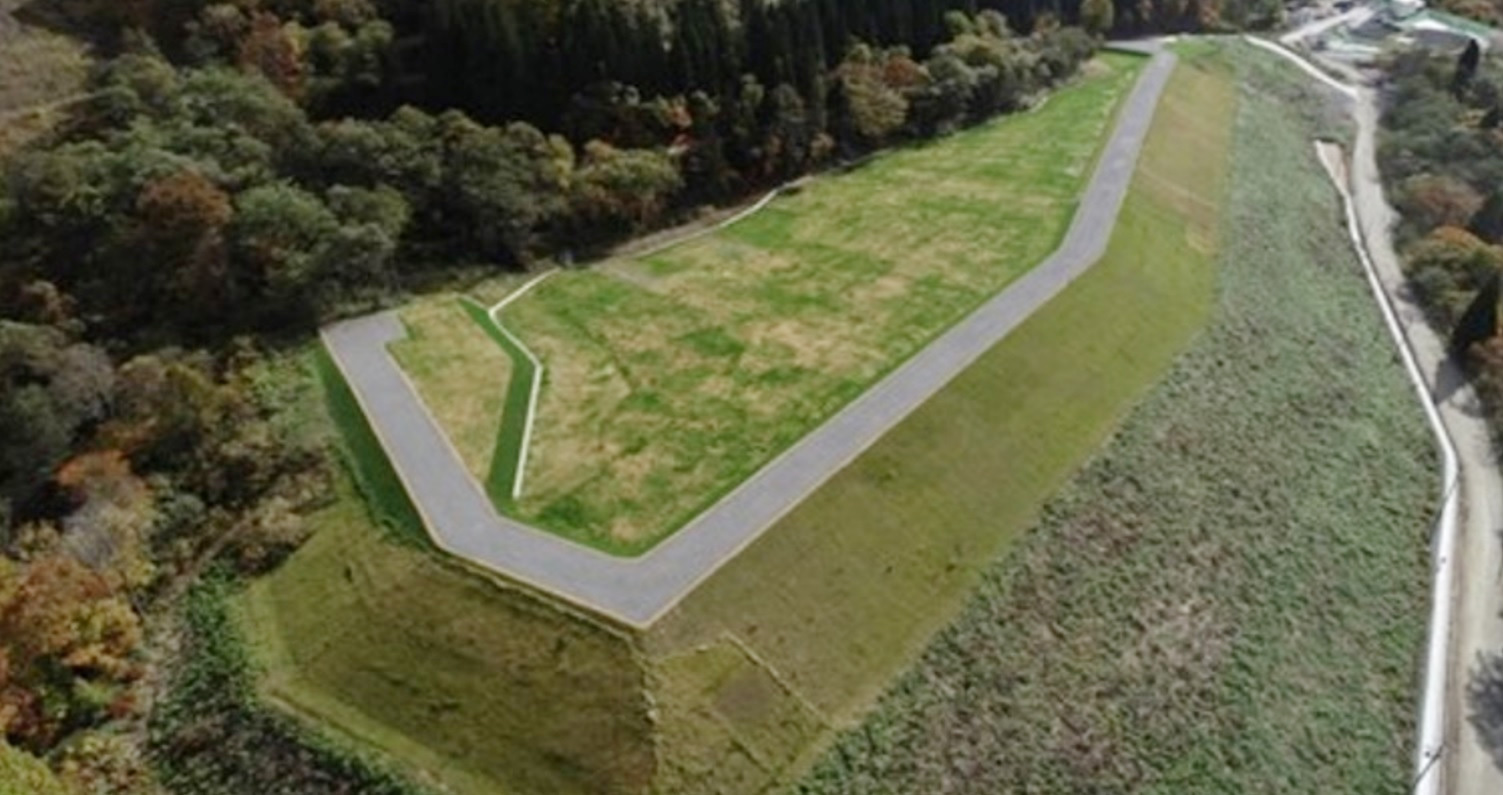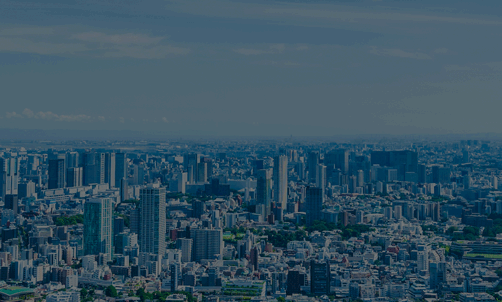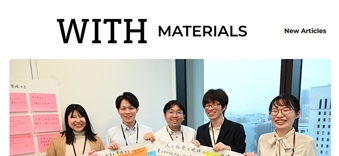- Home
- Sustainability Report
- Mitsubishi Materials Group's Initiatives on Material Issues
- Preventing leakage of harmful substances outside the site and eliminating environmental law violations
Strengthening Response to SCQ Issues
Preventing Leakage of Harmful Substances Outside the Site and Eliminating Environmental Law Violations

事業所見学会(ユニバーサル製缶㈱結城工場にて)
Environmental Management
| Theme of activities | Activities during FYE March 2024 | Self- assessment |
Targets/plans for activities from FYE March 2025 onwards |
|---|---|---|---|
|
|
A |
|
Self-assessment grades A: Target achieved B: Target mostly achieved C: Target not achieved
Environment Policy
This “Environmental Policy of the Mitsubishi Materials Group” was established based on the Sustainability Policy and is considered to be the foundation for the business activities of the Mitsubishi Materials Group.
- Promote Recycling and Provide Environmentally Friendly Products
- We leverage our advanced recycling technologies to promote recycling of waste. At the same time, we provide environmentally friendly materials and products across our business activities starting from raw material procurement to the development, production, distribution, consumption, disposal and recycling of raw materials and products.
- Advance Decarbonization
- We work towards the decarbonization of our business activities by reducing energy consumption. We will also tap into geothermal and other renewable energy sources to decarbonize our entire value chain.
- Respect Biodiversity
- We engage in business activities that take ecosystems into account throughout our value chain, including the development of natural resources.
- Effectively Use and Conserve Water Resources
- We work to reduce water consumption through circular water management and reuse of cooling water, cleaning water and all other water used across our business activities.
- Sustainably Manage Company-Owned Forests
- We make effective use of timber and other forest resources as well as ensure appropriate management of company-owned forests that contribute to decarbonization, biodiversity and water conservation and recreational activities of the local communities.
- Encourage Environmental Education and Harmonious Coexistence with Society
- We strive to reduce the environmental impact from our business activities and prevent pollution by educating all our employees on relevant laws, regulations, and agreements on an on-going basis. We communicate proactively with our stakeholders and engage in environmental conservation initiatives.
(Last revised date: December 1, 2021)
Promotion System
We have established the Environmental Management Panel to be a dedicated subcommittee under the SCQ Promotion Office that formulates and implements Group-wide environmental measures. We appoint environmental management supervisors for each business division and manufacturing site. They work to prevent pollution and ensure compliance with environmental laws and regulations by collaborating closely with the head office environmental management department.
Environmental Management System

Environmental Management Activities
Environmental Training
We operate environmental management systems under the ISO 14001 standard and other environmental management systems at our sites. Under those systems, we engage in continuous activities to ensure compliance with laws and regulations and improve our environmental performance. We have worked to develop and implement environmental training programs and legal checking systems to cultivate managers who possess knowledge of environmental technologies, laws and regulations.
In particular, the Group regards waste management as a key business process and promotes the use of recycled raw materials, such as in our metal smelting and refining business. We appoint staff who are responsible for waste management and those in charge of practical operations at each facility. We provide training on laws and regulations and apply strict operating rules in our efforts to ensure appropriate waste management and compliance with relevant laws and regulations. We provide education for staff responsible for waste management with the aim of understanding waste risks and the roles required by introducing the latest case studies on waste management. For staff in charge of practical operations, we organize seminars for understanding the specific regulations of the Waste Management and Public Cleansing Act.
Environmental training achievement in the FYE 2024
| Attendance | ||
|---|---|---|
| Waste management training | For managers | 33 |
| For operational personnel | 85 | |
Sharing Information to Address Environmental Issues
To handle the environmental issues that arise at our sites, we have established an office providing the consultation services of staff specialized in environmental issues, at our head office. This office provides detailed support, ensures that useful information is shared between the head office and other sites, and responds to environmental issues.
We hold an annual Meeting of Administrative Managers Responsible for Environmental Management for management-level staff at our facilities. At these meetings, we share information about environmental measures and issues. In addition, we give annual site tours for environmental management supervisors. These tours are opportunities to learn methods of operating onsite related to environmental management and initiatives for preventing environmental accidents, and to exchange information with supervisors from other sites.
Compliance with Environmental Laws and Regulations
We keep all our sites up to date on changes in legislation applied to the Mitsubishi Materials Group by providing information via intranet or email. In the event of major revisions or revisions requiring measures such as equipment upgrades, we hold explanatory meetings to share information on the requisite measures and ensure that all our sites are prepared to take appropriate action.
Current laws and regulations are checked periodically at each site. In addition, the Internal Audit Department checks the status of compliance with environmental laws and regulations, how chemical substances are handled, how equipment is managed and so on. When a noncompliance is discovered we correct it promptly and share information about it with related sites as part of our efforts to improve the level of management in the overall Group.
In the event of installation of new facilities, facility upgrades/changes, or any other projects involving new operations above a certain scale, individual sites as well as relevant head office divisions determine what notifications they are required to submit.
Status of Compliance with Environmental Laws and Regulations
With regard to our compliance with environment-related laws and regulations in the fiscal year ended March 2023, including water pollution, air pollution and waste disposal, we were not subject to any adverse dispositions (revoked permits, orders to cease operations, orders to stop use of equipment, fines, etc.) by regulatory authorities.
We received 3 complaints regarding odor, noise, and weed growth. For all of these we promptly investigated the causes and implemented the necessary countermeasures.
Addressing Environmental Risks
In accordance with its Environmental Policy, the Mitsubishi Materials Group identifies environmental risks it faces and takes measures to prevent such risks from materializing.
Pollution of air, bodies of water, soil or groundwater by hazardous substance leaks, or inadequate treatment of industrial waste could have a detrimental impact on the environment, as well as a serious impact on our business activities as a group. We carry out risk assessments in line with the nature of our business activities, the substances that we handle, and the locations of individual sites, and take action as necessary. In addition to preventing inadequate waste treatment at our own departments, we take steps to ensure that we do not overlook inadequate treatment by contractors by taking measures including on-site confirmation.
At the closed mines (non-ferrous metal mines) we own, in order to prevent mining-induced pollution, we continue to maintain tailings dams, mining tunnels and mining water conduit, and to appropriately process acid wastewater containing heavy metals generated from these locations. Biodiversity is also an important environmental risk for us. At the mines from which we procure raw materials (such as ores), we have established environmental and social standards, including standards for the conservation of biodiversity, and we confirm our compliance with these standards. In addition, we manage the company-owned forests in Japan to ensure a high level of ecosystem services from them. They fulfill a certain standard that has been assured by our acquisition of a forest certification.
To reduce climate change risks, we take multiple approaches for the conservation of energy and the reduction of CO2 emissions. We also study CO2 capture and use, and generate renewable energy. Regarding the risk that a shortage of freshwater resources could impact our business activities, we conduct risk assessments for our major facilities in Japan and overseas and take measures including the effective utilization of seawater, water conservation through the improvement of the efficiency of the production process, water recycling, and ensuring that wastewater is treated and purified.
Environmental Accounting
In the fiscal year ended March 2024, we invested approximately \2.8 billion in areas including construction at the Tohoku Power Service Station of the Komatagawa New Power Plant (hydroelectric power plant) certified as a renewable energy power generation facility, and the renewal of equipment at copper smelting and refining plants, with the goal of preventing air pollution and water pollution.
Costs associated with environmental preservation came to around \7.3 billion, including environmental measures such as exhaust gas treatment, wastewater treatment and waste disposal, as well as the maintenance and management of equipment to prevent pollution, waste disposal, and maintenance of anti-pollution facilities, etc.
Spending on Environmental Preservation in the FYE March 2024[Millions of yen]
| Category | Investment Amount | Expense Amount | |
|---|---|---|---|
| Business area total costs | Business area costs | 2,816 |
6,676 |
| Pollution prevention costs | 2,039 |
2,712 |
|
| Global environmental conservation costs | 711 |
301 |
|
| Resource recycling costs | 66 |
3,663 |
|
| Upstream/downstream costs | 0 |
0 |
|
| Administration costs | 0 |
230 |
|
| R&D costs | 19 |
66 |
|
| Social activity costs | 0 | 1 |
|
| Environmental remediation costs | 9 |
287 |
|
| Total | 2,844 |
7,260 |
|
- * Calculations of environmental costs are based on the 2005 version of the Environmental Accounting Guidelines published by the Ministry of the Environment.
- * Figures refer to Mitsubishi Materials on a non-consolidated basis.
Managing Closed Mines
| Purpose of activities | Activities during the FYE 2024 | Self- assessment |
Targets/plans for activities from the FYE 2025 onwards |
|---|---|---|---|
|
| A |
|
Self-assessment grades A: Target achieved B: Target mostly achieved C: Target not achieved
Managing Closed Mines
We are a company with its origins in the mining industry. The Mitsubishi Materials Group owns a wide range of mines around Japan, including limestone, coal and nonferrous metal mines, such as copper, lead and zinc mines. Operations at all of our non-ferrous metal mines have now been suspended or discontinued. Currently, we are managing 20 closed mines across 15 locations. We have continued to implement the following controls and management programs for our closed mines on a long-term basis, pursuant to Article 5 of our Code of Conduct, which states, “[Environmental Management] We will work to manage our environmental impact and promote decarbonization, make efficient use of natural resources, and accelerate recycling.”
- Appropriate treatment of the heavy metal-containing wastewater (acid mine drainage) released from former mining sites
- Management of tailings dams (sites used to store rubble from mining minerals, slag and sediment from mine drainage treatment).
- Inspection and maintenance of excavated mine underground spaces, drifts and channels for conducting mine drainage
- Safety measures to prevent unauthorized entry at disused mine mouths and subsidence sites
We continue to preserve and maintain sections of mine drift in some closed mines as cultural heritage sites or tourist facilities to exhibit their former conditions and preserve historical mining technologies for future generations.
Closed Mitsubishi Materials (non-ferrous) Mines

Overview of Acid Mine Drainage Treatment at Closed Mines
Broadly speaking, acid mine drainage can be generated in two ways. There is the acidic water in the pits (mine water) containing heavy metals, generated through contact between oxidized minerals and rainwater and groundwater, which can fill the underground pits and mining cavities formed in mineralized belts due to mining operations. Then there is the permeated water (wastewater) generated when small amounts of heavy metals, which are contained in slag and other substances in the tailings dams, come into contact with rainwater and surface water. The acid mine drainage goes to processing plants, where it undergoes neutralization and the removal of heavy metals. The water is then discharged into rivers at water quality levels that fall within wastewater standards.

Major Management Tasks for Closed Mines
The Group controls acid mine drainage treatment, tailings dams, mine drifts and entrance drifts. Acid mine drainage treatment involves the appropriate processing. Tailings dam control involves preventing stored slag and sediment from leaking out in case of dam body collapse. Mine drift and entrance drift control involves inspections to maintain waterways for acid mine drainage and sealing entrances to prevent injuries due to third-party trespassing in mine drifts and mine drift collapse. Of these measures, acid mine drainage control is carried out around the clock every day of the year.
 Acid mine drainage treatment facilities (Yatani Mine)
Acid mine drainage treatment facilities (Yatani Mine)
 Example of tailings dam management (Osarizawa Mine)
Example of tailings dam management (Osarizawa Mine)
Digitalization of Management Tasks for Closed Mines
We are pushing forward with the digitalization of management tasks for closed mines to improve the management and efficiency of the tasks.
- Operational data is collected automatically and centrally managed and utilized as digital data. The use of this digital data enables the remote management of operations at acid mine drainage treatment facilities and other locations.
- We have improved management by creating a system for the early detection of abnormalities, including the visualization of operational data (such as the creation of graphs showing change over time) and remote alarms that are triggered when an abnormality is detected.
- We use smart devices to inspect and maintain records of acid mine drainage treatment facilities and tailings dams, digitizing the inspection results for centralized management. This ensures the efficiency of the tasks by, for example, automatically creating reports.
 Visualization of operational data (displaying data trends)
Visualization of operational data (displaying data trends)
 Recording inspection results using smartphone (digitalization of inspection data)
Recording inspection results using smartphone (digitalization of inspection data)
Facility Upgrading and Environmental Countermeasures for Closed Mines
Since 2015, our Group has been implementing responses to deteriorating natural disasters and other risks by conducting protective construction to guard against contamination, as well as reinforcing tailing dams to prevent uncontrolled release of slag and sediment in anticipation of a major earthquake, reducing wastewater at the source, strengthening the capacity of acid mine drainage treatment facilities, and upgrading aging facilities. We recorded an environmental countermeasure reserve for work expenses from the fiscal year ended March 2016 to the fiscal year ended March 2019, and in the fiscal year ended March 2023 we appropriated some additional funds to cover expenses for the repair and toughening of locations damaged due to torrential rains.
Tailings Dam Reinforcement
Drawing on lessons learned from the leakage of slag and sediment at tailings dams managed by other companies during the Great East Japan Earthquake, in November 2012, the Ministry of Economy, Trade, and Industry revised its technical guidelines on aseismic performance. Based on this, we evaluated the stability of the tailings dams managed by the Group, which revealed that measures needed to be implemented at 10 locations. Thus, we started construction work to design and implement stability measures at the locations in the fiscal year ended March 2016, and have completed these measures at nine of the locations.
 Reinforcement work by soil stabilization at the Yatani Mine Tailings Dam (completion)
Reinforcement work by soil stabilization at the Yatani Mine Tailings Dam (completion)
Wastewater Reduction at the Source
The operational burdens and risks associated with acid mine drainage treatment due to environmental changes (large-scale typhoons and guerrilla rainstorms) in recent years have increased. To ease these burdens and mitigate the risks, we are proceeding with source countermeasure construction, the strengthening of acid mine drainage treatment facility capacity and updating aging equipment. One way of the source countermeasures is to cover exposed surfaces of mineralized belts on a large scale, such as by using the latest technology (which enables greening that was previously difficult due to acidic rock conditions). This prevents rainwater from coming into direct contact with the mineralized belts, which reduces the amount of water to be processed as well as the burden of contamination.

 Contamination containment work(Komagi Mine) (Top: before work, Bottom: after work)
Contamination containment work(Komagi Mine) (Top: before work, Bottom: after work)
 Upgraded pit wastewater treatment facility (Osarizawa Mine)
Upgraded pit wastewater treatment facility (Osarizawa Mine)
Human Resources Development
All the Group’s non-ferrous metal mines are closed and some time has passed since the mines were closed down. As such, we have seen a decrease in relevant human resources as engineers with skills in non-ferrous metal mine management have either reached advanced age or retired. In order to continue to sustainably manage closed mines, we are continually providing opportunities to train young engineers with little mining experience, and setting up a variety of educational programs for engineers (including programs for acquiring skills for the management of closed mines and for obtaining relevant qualifications), including the use of web training and on-demand instruction. In this way, we strive to transfer mine management skills.
 Training on mine wastewater treatment process
Training on mine wastewater treatment process
 Engineer training (basic training)
Engineer training (basic training)
Joint Industry-academic Activities
We have opened an endowed laboratory in the field of resources environment and remediation at Hokkaido University, and since the fiscal year ended March 2018, we have continued to engage in a variety of education and research activities related to the protection of the mine environment. In coordination with the endowed course described above, we engage in a variety of R&D activities to repair and protect mine environments with the help of Hokkaido University as well as other universities and research institutions. We have widely publicized the achievements of these R&D efforts by presenting them in research papers, at symposiums and at other events.
- Greening of former mining sites (University of Tsukuba, Hokkaido University): We are researching the heavy-metal resistance that endophytic fungi can provide to plants in former mining sites, as well as researching and investigating greening by native plants, in our efforts to facilitate the greening of former mining sites, where it has been difficult for plants to take root.
- Examination of a method to evaluate ecological effects (National Institute of Advanced Industrial Science and Technology): We are examining a method of evaluating ecological effects of inflow of mine drainage on rivers from the viewpoint of effects on aquatic organisms by using field surveys.
- Development of a remote monitoring technology (National Institute of Advanced Industrial Science and Technology): We are developing a super power-saving remote monitoring system with radio wave directivity, a technology that will enable the collection of management data from remote locations in mining areas without a power grid or communications network.
- Other (Hokkaido University): To improve issues with the operation and management of acid mine drainage treatment, we have begun a new study to evaluate the risks of the leaching of heavy metals from neutralizing precipitate and understand the sedimentation mechanisms of manganese oxides under low concentration conditions.
 A plant tour given to students from an endowed laboratory (site tour)
A plant tour given to students from an endowed laboratory (site tour)
 A greening survey at a former mining site
A greening survey at a former mining site
 A river ecological survey (collection of benthos)
A river ecological survey (collection of benthos)
Communication with Local Residents
To promote local residents’ knowledge of our measures for preventing mining-induced pollution at our closed mines, we proactively hold sessions to explain countermeasure work and offer facility tours. We also strive to take part in environmental conservation activities and contribute to local communities through tree-planting and the release of juvenile fish, as well as participation in and cosponsoring of local events and festivals. In addition, we accept inspection tours of our mining facilities by students and researchers from Japan and overseas. We thus offer our facilities as locations for research and development and skills training related to the prevention of mining-induced pollution.
Strengthening Response to SCQ Issues
- Prevention of Occupational Accidents
- Creating Mentally and Physically Pleasant Workplaces
- Prevention of Infectious Disease
- Reinforcing Compliance
- Enhancing Internal Control through Group Governance
- Group Tax Policy
- Enhancement of Corporate Governance
- Preventing Leakage of Harmful Substances Outside the Site and Eliminating Environmental Law Violations
- Elimination of Serious Quality Non-conformance







